What You Can Do With Fragments of Class Time
A MiddleWeb Blog

Instead of railing against it (I’ve done this and it doesn’t help!), I take it as an opportunity to try new things in class that don’t usually fit into my curriculum. Here are a few ideas for ways to positively use this time, broken down by how long they take.
Only have a few minutes?
5 Minute Mysteries – There are many books with short mysteries to solve, as well as websites with the story and solutions. Sharpen your students’ deductive reasoning and critical thinking skills. It can be helpful to print out the mysteries so that students can refer back for clues.
Donation trivia sites – While there is some controversy over whether they actually make donations, websites like Free Rice and Bean Bean Bean offer trivia questions in a variety of subject areas. With every correct answer, a small amount of rice or beans (or equivalent cash) is donated to aid organizations. With no need for directions or preparation, this is a fast activity that may help others. (The respected Snopes.com site says Free Rice is “legit.” Bean Bean Bean explains its donation approach here. Please leave a comment if you know about these or similar sites.)
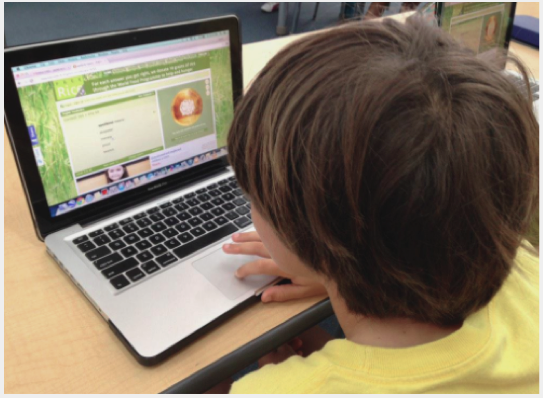
A student learns vocabulary and donates rice on freerice.com.
Flocabulary – I love Flocabulary and always make sure I have a subscription for my class. This amazing resource features catchy hip hop songs about tons of different subjects. There are printables and activities associated with each song, although my students and I tend to use the raps as a provocation for a lesson I prepare.
The Week in Rap – Produced every Friday, this Flocabulary feature sums up news from around the world with rap-like lyrics, and is an excellent opportunity to bring current events into your classroom. While a teacher subscription costs $11.50 a month, it is worth it to me when I consider how much my class gets from it. I highly recommend doing a free trial and sharing a Flocabulary song with students during your flex time at the end of class.
Have half a class period?
Read – my first suggestion is always to give students time to read; there is never enough reading time and independent reading benefits students across the content areas. If students don’t have their own independent reading books with them, you could read short stories to them.
A few of my middle school favorites:
“Priscilla and the Wimps” by Richard Peck
“Eleven” by Sandra Cisneros
“Fish Cheeks” by Amy Tan
“Charles” by Shirley Jackson
“The Stolen Party” by Liliana Heker
Here are “10 Short Stories Middle School Teachers Love” at CommonLit. I could discuss short stories all day, so please share some of your favorites in the comments.
Another option is to have a stack of picture books available for students to explore. They can be content-related, or just ones you think they will enjoy. I shared a list of excellent wordless picture books on MiddleWeb in March 2018.
Play a vocabulary game – I’ve been playing Kahoot with my classes since 2014 and Quizlet Live since 2016. This probably means your students have been playing those games for a few years, as well, and are ready for something new.
Telestrations – A fun board game that is a combination of Pictionary and the classic whispering game “Telephone.” I adapted it for my class as a vocabulary review game. In groups of four, students get a deck of cards with the vocabulary words and each student gets a small, six-page, stapled booklet and a pencil. I use the scrap paper from my class and usually have students who want to make a bunch in advance during rainy indoor recesses!
A video of the official instructions is available here, and this is how I modify it for my class:
- Students write their own name on the front page of the booklet.
- Each student picks a card from the deck and writes the word on page 2 of the booklet, then illustrates that word on page 3. I give them about 45 seconds and remind them not to peek.
- They keep the booklet folded back at page 3 and hand the booklet to the player to the right. That student needs to guess what the drawing is and write it on page 4. This takes less than 10 seconds and should be silent.
- The booklet is passed to the right again with page 4 folded open. Students flip to page 5 and have 45 seconds to draw the word they have just seen.
- The final pass happens and students write the word from the page 5 illustration on page 6. The booklet is returned to the original owner and the illustrations and guesses are reviewed.
I like doing this activity at the start of a unit with new vocabulary words and again at the end as a way for students to see their increased knowledge.
Create with math manipulatives – Students love hands-on activities, and it’s great to incorporate extra movement on days where they will be sitting still for assemblies or testing. This is the perfect time to push the desks to the side and break out the math manipulatives.
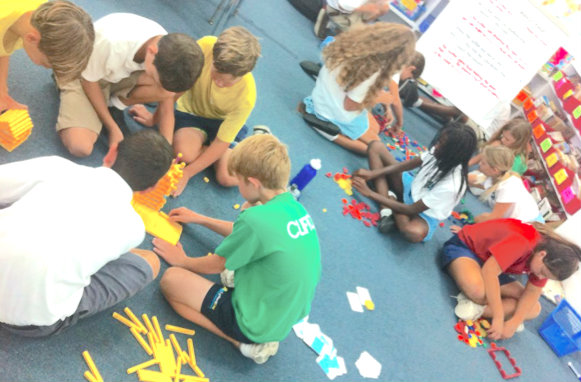
Math manipulatives can be used for exploration and collaboration.
Students can do open-ended exploration or you can challenge them to create tangrams. I’ve also had them work in groups of three, with one student creating a tangram,(search Amazon for supplies). the second looking at it and then describing it to the third student who has to replicate it without seeing the original. This is a fun listening activity that they love to repeat.
Have a class period or more?
PechaKucha – A fun and unique presentation style that emerged from Japan in 2003, PechaKucha means “chit chat” in Japanese. You can learn about its history here, but the idea is that presenters share twenty slides, which automatically advance every twenty seconds. These constraints keep the presentation flowing and deter students from including/reading long text passages from a slide.
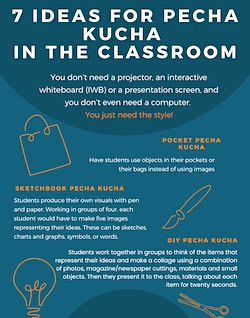
PechaKucha would be a perfect activity when you have several days of extra time in a row, such as after standardized tests or exams. The first day or two could be preparation and the next few days could be the actual presentations. I’m really excited to try this out with my students and shake up their fallback presentation habits.
An escape game – Admittedly, these take a lot of prep work, but the payoff is huge and students love them. I wrote an article for MiddleWeb about how to organize a breakout game in your classroom. They might be good for a day just before the holiday break.
STEM challenges – There are many excellent resources for finding STEM challenges that suit your needs. These are an ideal way to get out energy while learning and having fun. The preparation doesn’t have to be intensive; I had some water-damaged bulletin board paper, so I gave small groups a piece of the same size and three pieces of tape. They were tasked with seeing who could build the tallest, free-standing tower. Activities like this can be expanded or condensed to meet the time you have.
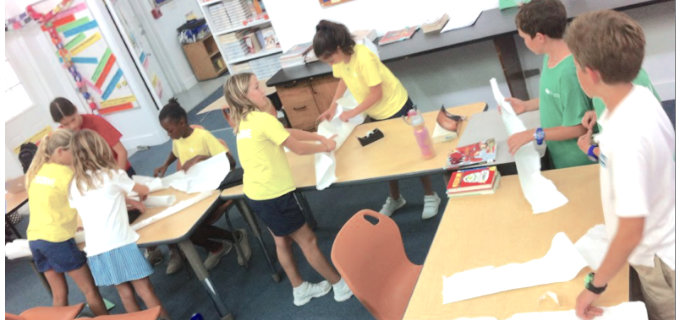
STEM challenges can incorporate recycled materials – these kids built towers!
Learn to use Scratch – Scratch is a free programming language and a creative and entertaining entry into the world of coding.
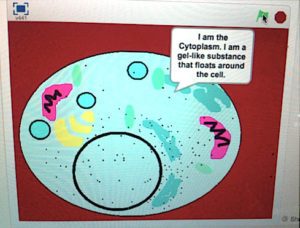
Students used Scratch to animate animal cells.
My class first explored Scratch through the Hour of Code; there are many games and activities available on the site. We went on to use it to create models of animal cells as part of a unit review. In 2023, Hour of Code will include some exploration of AI.
Enjoy a curriculum break
By reframing our thinking about class interruptions and the short attention span of kids before school breaks, we can create a memorable experience for them and add something new to our teaching practice.

































